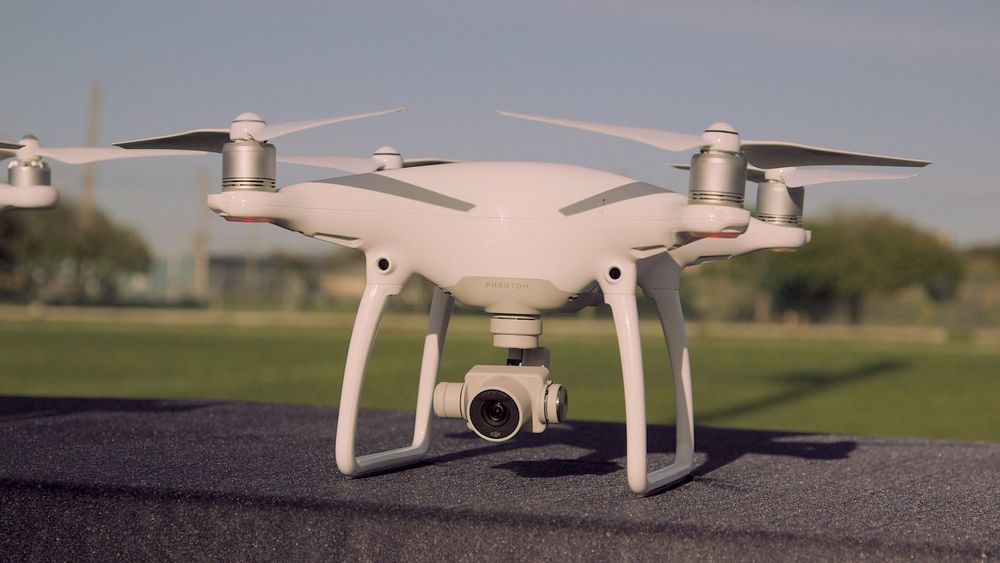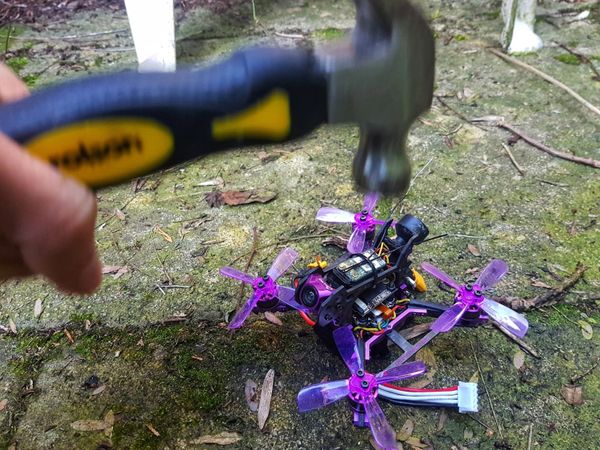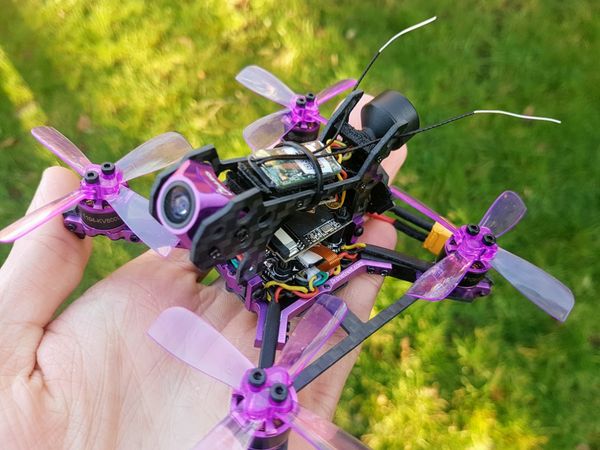The two major consumer drone announcements of 2016 are the Phantom 4 and the Typhoon H. Although the phantom 4 is cheaper, both platforms aiming at the same market.. (flying cameras). But the main question is which is better?
The short answer
Currently the Phantom 4 wins because of its lower price (when you include the realsense module on the typhoon). Although the obstacle avoidance system is not perfect (especially with small objects like smaller tree branches), the fact that it also allows for visual object tracking makes it easier to record professional looking videos with ease by keeping your subject in shot as you fly around (most of the time). However if you prefer to film yourself doing stuff from the drone, then the Typhoon H follow me functionality is better when using the wizard wand as it still relies on GPS to track you.

With all of the core specifications being similar such as flight time, 4K camera, obstacle avoidance what sets these two drones apart?
Obstacle Avoidance
The key feature of these two flagship drones of 2016 is the fact that they include object avoidance / anti collision technology. This is a game changer as it takes the safety factor of flying your drone to the next level. This means that when you are flying and your drone detects that it is approaching an obstacle in front of it like a person, tree, or a building, the autopilot will take over and stop your quadcopter, preventing a crash.

Phantom 4 + Movidius
The core of DJI’s computer vision comes from the Myriad 2 VPU (vision processing unit) from Movidius, company who specializes in designing vision enabled systems. The primary sensors of the system is a forward facing stereo camera pair which are able to provide depth measurements of the environment in front of the phantom. Furthermore a downward facing camera and ultrasonic sensor provide the phantom with greater position hold ability and altitude above ground measurements. This Myriad 2 VPU is responsible for the 3 core features that set the phantom 4 apart from the competition, being ActiveTrack, Tap to fly, and obstacle avoidance in real time. Below is a great video overview from modvidius about the chip and the computer vision features onboard the phantom 4.
Tyhoon H + Intel
The Yuneec Typhoon H relies on an Intel realsense system for its computer vision functionality. This is also a stereo camera system, but also includes infrared to get better depth perception (like the Xbox Kinect). However the important distinction here is that this is an optional unit (as the Typhoon H base model is cheaper than the phantom 4) The basic typhoon H only includes ultrasonic based object avoidance which means that the object will need to be relatively large in order for it to work. However some of the demo videos suggest
suggest that the realsense module will be able to outperform the Modvidius system on the phantom, but this system will add to the base price of your drone.

So far only Yuneec and DJI have drones capable of this using computer vision systems, although I am sure that there will soon be an addon for the 3DR Solo for obstacle avoidance in the future.
What sets them apart?
Both the phantom and typhoon have the ability for obstacle avoidance to prevent you crashing. Assuming you upgrade to the realsense module on your typhoon H, the performance should be similar as I dont think the basic ultrasonic sensor will be very useful for smaller obstacles like poles. So what sets the two apart?
For starter the price, although the Typhoon H base model is cheaper, when you add the realsense module the overall unit price will be more than the phantom 4. That said the key thing here is that because the typhoon as a 360 degree gimbal it means that for obstacle avoidance its much more useful. If you are flying your phantom backwards, its got no way of detecting an obstacle. If flying the typhoon you can fly it forwards to the realsense module will detect obstacle, but you can turn the camera gimbal to face backwards allowing you to look backwards without needing to worry about crashing into something.

Object Tracking and Follow Me
Both the phantom and typhoon have the ability to actively keep a subject in frame while flying autonomously. When it comes filming yourself doing cool things with your drone, I think the upgraded Typhoon H professional (with realsense) is the better choise even if it is more expensive.
The superior follow me functionality is thanks to the wizard wand (a small device that looks like a TV remote control) so the typhoon does not need to rely on any computer vision tracking to follow you, just good old GPS. The done will track you via the wizard wand GPS signal, and the realsense module with avoid obstacles and figure out the best route around them while keeping you in the frame. Furthermore because the gimbal can rotate 360 degrees the obstacle avoidance sensor always points forwards, making it less likely to crash, even if the drone is in front of you.
Yuneec Typhoon H Professional (with realsense) is better if you want to shoot follow me videos
The phantom 4 does a good job at tracing a subject via the cameras, but as soon as you move too fast it looses you, so its only useful if you want to film a car driving smoothly, or yourself walking in a field.
Either way the ability to dynamically keep you in frame definitely makes it 100% easier to get impressive professional looking tracking shots you move around.
4 Motors vs 6
One thing that we should not forget is that the typhoon H is a hexacopter, and the phantom 4 is a quadcoper. Having an extra pair of motors on the typhoon H make it much safer in the event of a prop breaking, or a motor failing. A hexacopter is still able to safely land if a motor fails, if it happens on a quadcopter it turns into a flying brick. However the event of a motor failure is an extremely rare occurence so its not something I would worry about.
The controller

The controllers of the phantom 4 requires you to connect your own smartphone/tablet to view the camera video feed, while the typhoon H already includes a built in Android tablet to video the video feed and change settings on your drone. Which is better? Well Generally I think the typhoon ST16 controller is nicer since its fully integrated and you dont need to get annoyed if you get a call in the middle of a flight if you are using your smartphone as your screen on the phantom 4 drone.

For now we just have to wait and see when the typhoon H is officially released along with the realsense module, so right now I say go for the phantom 4 as we know it works well. But hopefully we will be blown away with the typhoon H performance and features as it will be nice to see something other than a white phantom flying around!
So there you have it, I tried to keep things brief so you get the basic idea but if you have any questions or comments please let me know below and I will be happy to answer them. Which do you prefer the phantom 4 or typhoon H and why? Or do you prefer neither?







